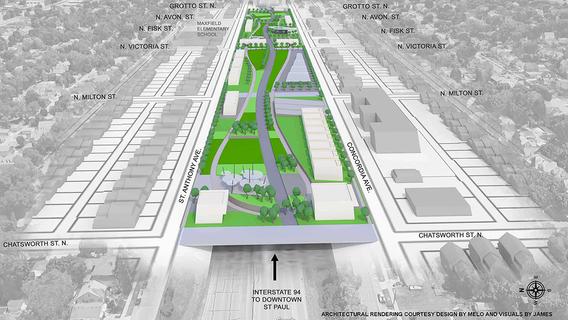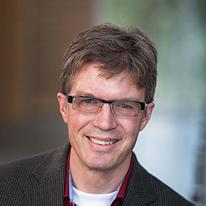
When urban highway projects were built several decades ago, many thriving communities were physically divided—and social, economic, and environmental hardships soon followed.
As social awareness and urban design have evolved, there is increasing interest in repairing and revitalizing these communities by redesigning right-of-way areas along highway corridors.
In a study sponsored by the Minnesota Department of Transportation (MnDOT), researchers at the Humphrey School of Public Affairs explored innovative right-of-way infrastructure projects from across the nation to identify lessons learned and best practices for equitable social, economic, and environmental outcomes.
"In the name of improving the lives of those who were better off, freeway construction often harmed those that were already worse off," says Frank Douma, director of state and local policy outreach with the Humphrey School’s Institute for Urban and Regional Infrastructure Finance. "While infrastructure alone cannot heal community wounds, innovative uses of right-of-way space can help reconnect these divided communities while creating usable spaces with multiple social benefits."

Douma and his team began by working with MnDOT to identify potential case studies from around the country and select eight projects for in-depth study. The projects they chose included freeway caps in Denver and Pittsburgh, a pedestrian bridge and an underground tunnel in Washington, DC, a freeway removal in Milwaukee, underpasses in Atlanta and New Orleans, and a solar panel array in Oregon.
After selecting the case studies, researchers studied each project by reviewing documentation and related literature and gathering information through interviews with key stakeholders.
Next, they completed an analysis for each project examining stakeholder engagement, governance structure, financing strategies, community and economic development, design features and placemaking, and health considerations along with the human and natural environments.
Finally, they conducted an online symposium with 90 participants from across the nation to present lessons learned and recommendations for planning and implementing projects in Minnesota.
Key finding: Community engagement is essential
One of the project’s main conclusions is that purposeful engagement with the surrounding community is needed to ensure a project serves neighborhood needs. State transportation agencies can collaborate by working with community groups, public and private funders, and other agencies in a visible, transparent process to identify community needs and non-transportation uses. Additionally, meaningful stakeholder input can focus goals to improve local rather than regional or statewide assets.
"This project illustrates that transportation needs and community needs aren’t mutually exclusive," Douma says. "Working with a variety of stakeholders on right-of-way uses can result in significantly greater benefits than relying on engineering alone."
From a regulatory perspective, researchers learned that non-transportation uses in right-of-way projects are permitted if the transportation purpose is not negatively impacted: In many cases, a non-transportation use can coexist above, below, or alongside the highway.
For highway removal projects, traffic studies should demonstrate that a project will not negatively affect transportation overall. Researchers also found that right-of-way use agreements were needed for all non-transportation projects in the right-of-way.
The findings from this study will be used immediately by MnDOT’s Center for Community Connections, which reviews proposals for non-highway uses in the transportation right-of-way, along with other MnDOT offices that are planning projects in or adjacent to rights-of-way.
"These results are invaluable to us as we consider non-transportation uses in MnDOT’s transportation right-of-way," says Lisa Austin, director of the Community Connections center. "The lessons learned will apply across all projects—big and small—that we help facilitate."
This story was originally published by the Center for Transportation Studies.

